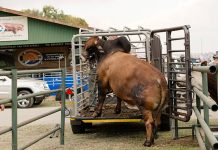The demand for animal protein will double in the next 20 years, which means most of the meat supply will need to come from developing countries. So said Prof Herman van Schalkwyk, the dean of the Department of Agriculture at the University of the Free State
He was speaking at the university’s annual cattle congress. added that genetic diversity in the animal protein industry may be needed in future to keep up with the increasing meat protein demand. V an Schalkwyk said higher average crop prices and associated feed costs would lead to higher beef prices. When compared to the average price between 1998 and 2007, the projected average price for 2008 to 2017 in nominal terms will be up to 20% higher.
“Take Russia, for instance,” he said. “Large imports of animal protein are expected, due to income growth that will dramatically increase demand. The local domestic production capacity will not be able to meet that demand. On the other hand, high grain prices forced feeder cattle prices in the US down and encouraged the liquidation of cow herds. This resulted in a short supply of processed beef because cows were being retained for herd building.” One billion people joined the middle class in 2007, which created a huge market for protein, according to Van Schalkwyk. He explained that it’s a fact that people spend less money on food as their income increases, but they also switch to more expensive foods and tend to include more meat in their diet. “An additional billion meat consumers will exist in the emerging countries in the next decade, including China and India,” said Van Schalkwyk. “The increase in beef consumption in a country like China, for example, is attributed to factors such as economic growth (expected GDP growth of 10,7% in 2008), income growth, increased domestic production and large imports.” – Annelie Coleman








